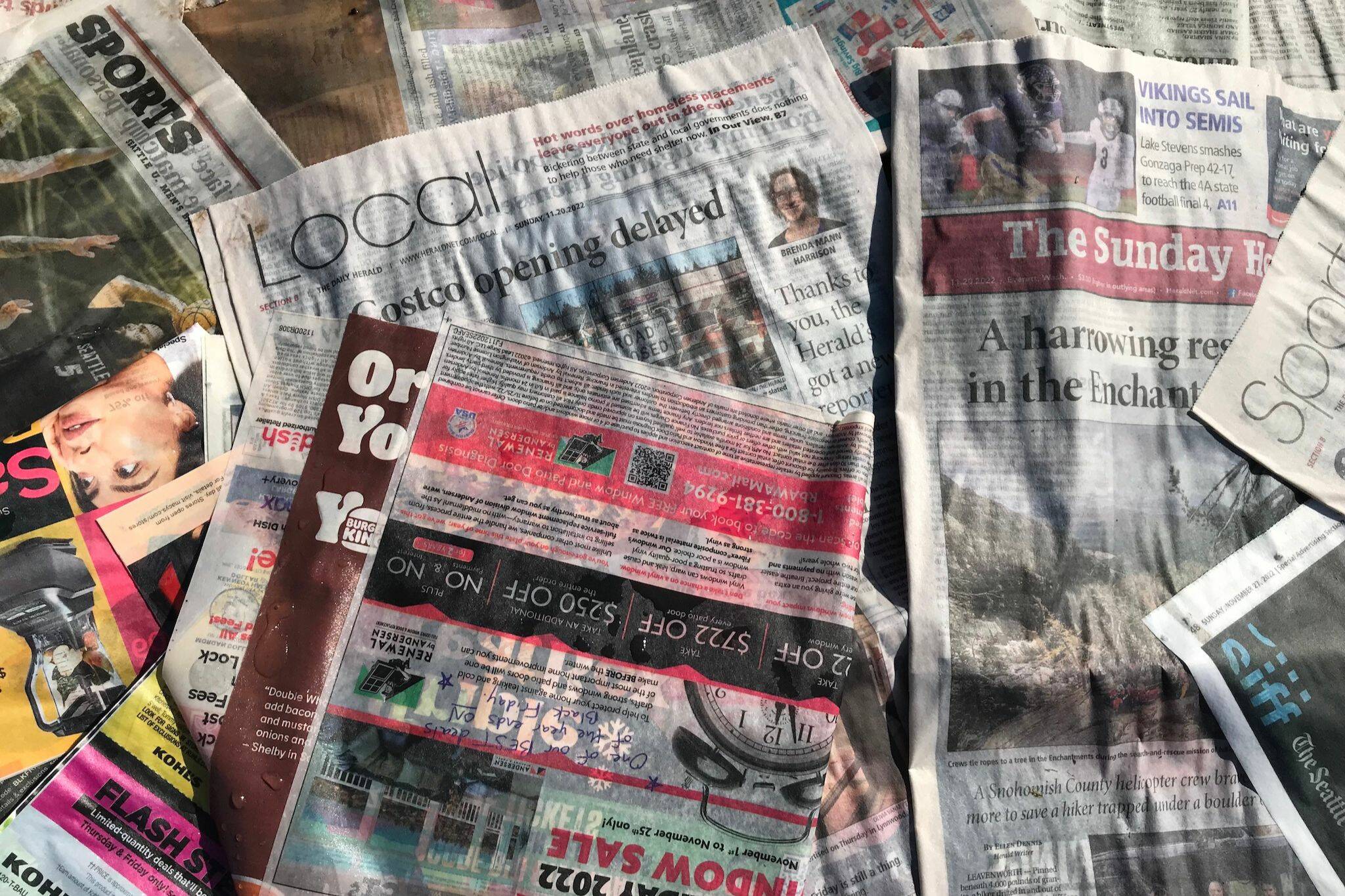“There’s your face, mom,” my daughter said, pointing to the ground where an old section of The Daily Herald with my Local News Impact column lay spread out.
“And there you are again,” she said, laughing at my photo peering at her from another edition of The Herald that I was spraying with water.
I had been saving my printed copies of The Herald — and cardboard boxes — for months in preparation for today. We were building a new no-till garden space that started with a thick layer of cardboard and newspaper, which we drenched with water and then covered with mulch before adding additional layers of organic matter in a lasagna-style fashion.
This process of sheet mulching builds a rich foundation for healthy soil. That’s why my daughter and I spent a lot of time gathering the resources needed to get our garden off to a good start. Ask any longtime gardener and they’ll tell you that the key to a successful garden where vegetables and flowers thrive is the soil.
The same could be said about local newspapers. They’re essential for democracy and for communities to thrive. And they require resources — and not just layers of wood chips, straw and compost.
You might already know that subscriptions and advertising used to provide the fertile resources local newspapers need, but that financial model doesn’t work anymore. Tech giants, like Facebook and Google, gobble up the revenue that once went to local publications — and there are other threats. You can learn more about the challenges facing local newsrooms and what happens when they run out of resources at heraldnet.com/local-news-impact/#Stay-informed.
When I ran out of cardboard for the base layer of my new garden plot, I turned to my next-door neighbor, who gladly handed over the stack of broken-down boxes in her garage. When I needed straw, a neighbor drove me in their pickup truck to and from the local farmer’s co-op. My neighbors are excited to help out with the large gardening project taking root because they know fresh vegetables and fruits get shared throughout the neighborhood and that enriches not only our diets but also our relationships with each other.
I think local newspapers are a lot like my garden. The journalism we produce at The Herald nurtures the health of Snohomish County and its residents with information that informs and connects us. Our stories can help us grow as citizens, make us smile as human beings and nudge us into action. Because local journalism benefits us all, we won’t hesitate to ask you, our neighbors, for support.
That’s why we invite you to plan now to attend a special Herald event, Behind the News Stories, from 6 to 8 p.m. on Oct. 24 at the Edmonds Center for the Arts. Behind the News Stories will give you an inside look at how we tell our community stories with care. It will also give us a chance to celebrate everyone who supports this valuable public service — and encourage others to join in.
You don’t have to wait until October to support local journalism that helps our community thrive. You can step up now to be a sponsor for Behind the News Stories.
If you do, you get to choose which Herald journalism fund to support, you’ll get recognized for doing good and your example of community support might encourage someone else to help out.
Who can be a Behind the News Stories sponsor? Anyone can: a local business, organization or individual. You are all our neighbors.
Learn more about Behind the News Stories and how you can be a sponsor, and check out scenes from last year’s event, at heraldnet.com/behind-the-news-stories.
Brenda Mann Harrison is the journalism development director for The Daily Herald. To learn more about the impact of local news and how you can join others in supporting community journalism, go to heraldnet.com/local-news-impact, send an email to brenda.harrison@heraldnet.com or call 425-339-3452. The Daily Herald maintains editorial control over content produced through community-funded initiatives.
Talk to us
> Give us your news tips.
> Send us a letter to the editor.
> More Herald contact information.

























